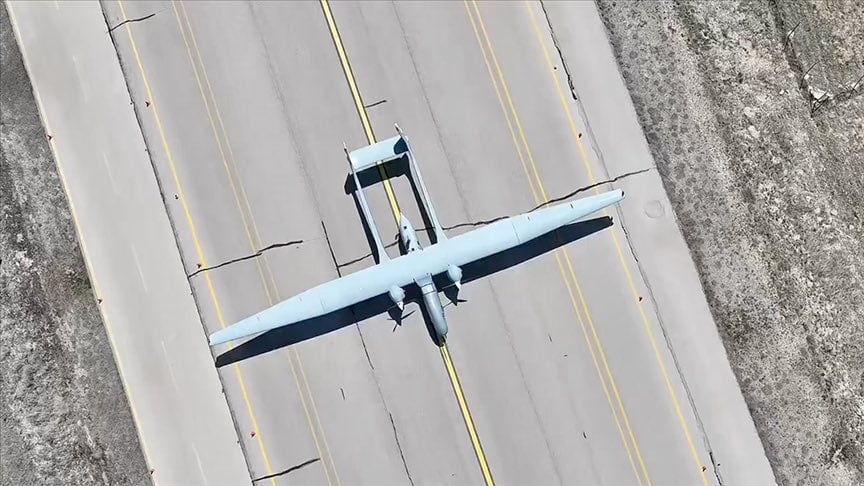A Turkish-made combat drone reached 40,000 feet in a recent test flight powered by an indigenous engine, setting a new altitude record and reflecting Turkey’s ongoing efforts to reduce reliance on foreign defense technology, Turkish Aerospace Industries (TAI) announced on its website.
TAI General Manager Mehmet Demiroğlu described the test powered by a PD-170 turbodiesel engine as a step forward in national defense efforts, writing on X, “With every success, we rise higher and take stronger steps toward the future.”
Turkey’s pursuit of indigenous engine technologies directly responds to difficulties with international suppliers during military operations in Syria and Libya.
Turkish drone operations faced export restrictions from countries including Canada, Austria and Germany on components such as engines and optics.
Canada suspended exports of drone optics and sensors, while Austria’s Rotax and Germany’s MTU limited engine sales.
These restrictions led Turkey to begin developing domestic alternatives like the PD-170 engine.
With the PD-170, Turkey joins a small number of countries that manufacture UAV propulsion systems, including the United States, China and Israel.
The PD-170 engine, developed by TAI, resulted from a multi-year program initiated in 2012 under Turkey’s Defense Industry Agency, the country’s principal defense procurement authority.
Designed for high-altitude and long-endurance missions, the PD-170 engine delivers up to 170 horsepower and began serial production in 2020.
The engine currently powers multiple UAV platforms, notably Aksungur and Anka drones.
On April 16, 2025, Aksungur conducted a four-hour test flight from Mürted Air Base, surpassing its previous altitude record of 37,500 feet.
The Aksungur has been used in various domestic and international operations and is capable of flying more than 50 hours with payloads up to 750 kilograms.
The Aksungur UCAV is equipped for continuous day-and-night operations, including intelligence, surveillance, reconnaissance and strike missions.
Its payload options include Electro-Optical/Infrared sensors for day-night imagery, Synthetic Aperture Radar for all-weather reconnaissance and Signals Intelligence systems for electronic warfare applications.
It also supports various air-to-ground munitions for different operational uses.
Beyond military applications, Aksungur has served in civilian roles, such as search-and-rescue operations and disaster assessment during natural catastrophes, including earthquakes, floods and wildfires.
The PD-170 engine will also power Baykar’s upcoming TB3 UCAV, designed for operations aboard short-runway naval vessels like Turkey’s flagship amphibious assault ship, the TCG Anadolu.
During a June 2024 test flight at Baykar’s Flight Training and Test Center in Keşan, the TB3 UCAV reached an altitude of 36,310 feet powered by the TEI-PD170 engine.
International defense analysts have noted Turkey’s growing role in the drone industry and the broader geopolitical implications of its UAV exports. Turkish drones have been used in conflicts in Libya and Nagorno-Karabakh, attracting the attention of foreign buyers.
Analysts say further development of domestic technologies such as the PD-170 engine could expand Turkey’s presence in the global drone market, which is currently dominated by the United States, Israel and China.

